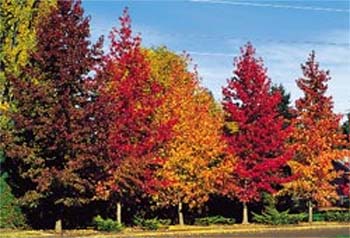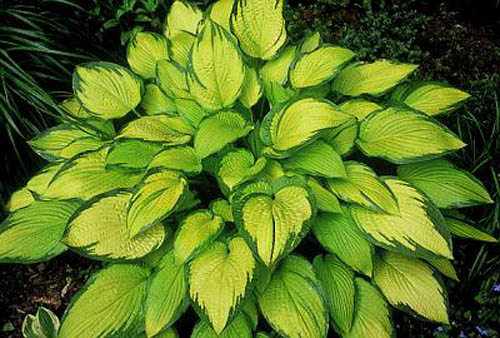With good reason, hostas are one of the most popular plants for the homegardener. After all growing hostas, is easy, and they provide fabulous, foolproof foliage that thrives in in almost any situation.
Hostas are shade plants, right? Not necessarily. Hostas are considered shade-tolerant plants, but shade might not be their ideal growing condition. Hostas grow best in an exposure with morning sun and afternoon shade.
Some cultivars will tolerate some afternoon sun, although plants grown in full afternoon sun probably will show signs of burning on leaves in the summer months. Many hostas are more vigorous and display their most vibrant colors if given at least some sun. Yellow colored hostas without at least a couple of hours of full sun will fade to green.
Keep in mind, the heat experienced in a full sun location can vary from area to area and even during different times of the day. Full sun in the morning hours will not be as intense as full sun at noon. So if your site is extremely hot or dry, you will need to keep any hostas sitting in full sun well watered.
Similarly, no hosta is going to thrive in deep shade. They all need some sunlight to photosynthesize. The shade tolerant varieties seem to do best in an exposure of morning sun and late afternoon shade.
Blue hostas require the most protection from the sun. This is because the blue color is actually a waxy coating on the leaves. The leaves themselves are a shade of green. The waxy coating gives them a blue tint. In full, hot sun, this waxy coating melts and exposes the green leaf underneath.
Unfortunately, only trial and error can tell you which hostas with variegation can tolerate full sun without burning. The thicker the leaves, the more tolerant they will be of full sun. Another problem with variegated hostas is that they have minimal amounts of chlorophyll. In full sun, the chlorophyll levels can increase and cause the leaves to pick up a green cast and look less variegated.
You can follow the rules and choose the recommended plants and still not have success. The only real gage for how sun tolerant a plant is, is how it is performing. If your Hosta plants are not doing as well try moving them to a new location.
Tips of the Month
Some simple things to remember about sunlight and growing hostas:
- The most important thing to remember is hosta are shade tolerant, not shade dependent.
- The more white a hosta has the more sun it needs to maintain vigor.
- A lot of the yellow/gold hosta have brighter colors in the sun.
- Blue leaved plants do better in deeper shade since the blue color is from a waxy coating on the leaves.
- No matter where you place the hosta, remember to water until it is established.
- All morning sunshine is welcome, then semi or full shade during the afternoon. 7. Hostas expire a lot of water via their leaves. The hot afternoon sun will tax their ability to supply sufficient water to the leaf. The heat will deteriorate the Hosta leaves from the edges inwards
- Some hostas will burn quite easily so that only 1-2 hours of early morning sun is the maximum that can be tolerated.
- Hostas that have yellow centers, or are all yellow must have 1-2 hours of direct sun.
- Generally, dark green and blue Hostas will do better in more shade.
Flower of the Month

Hosta Hybrid ‘Inniswood’
Named for Inniswood Gardens in Westerville, Ohio, Inniswood ( http://www.whiteoaknursery.com/about_us.asp ) is a version of ‘Sun Glow with rounded gold corrugated foliage and a wide, deep green edge has become a hosta world favorite. The fast growing 4 foot wide clump is topped with medium lavender flowers on 30 inch scapes in late spring.
Web Site of the Month
White Oak Nursery
Since 1984 White Oak Nursery has been a family owned and operated business specializing in raising hostas. In 2003 we expanded their product line to include daylilies. They grow their plants on twelve acres in Woodford County, Illinois. Their objective is to satisfy their customers by providing a wide selection of varieties at reasonable prices.


